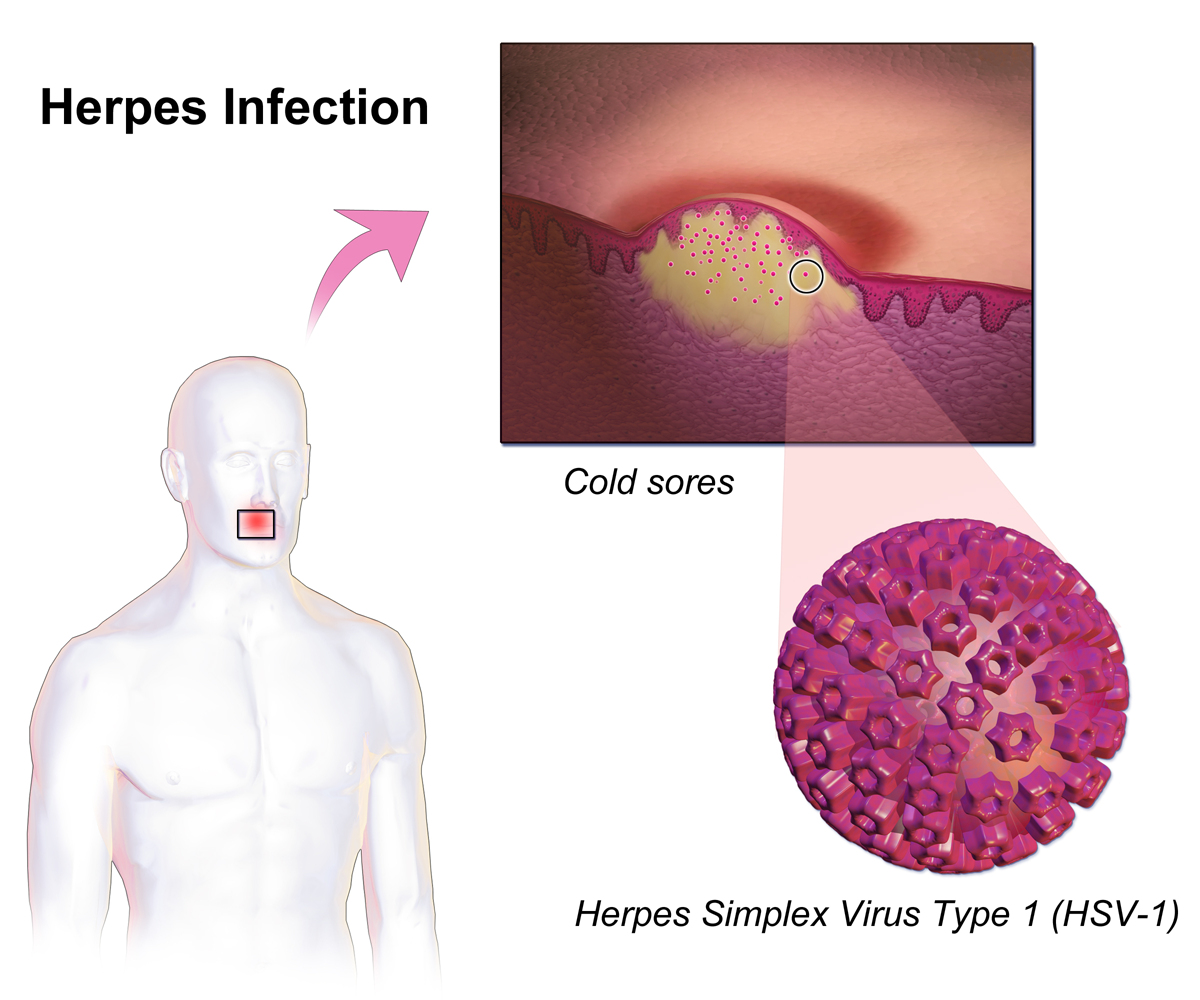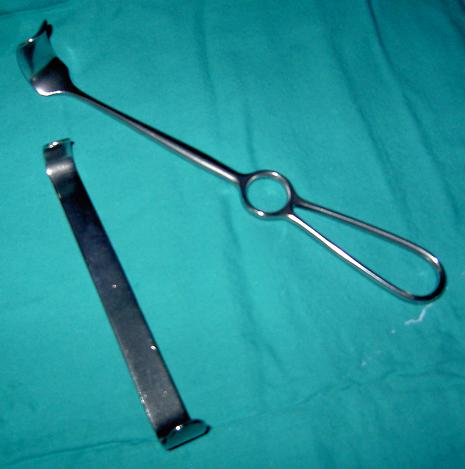|
Anal Fissure
An anal fissure is a break or tear in the skin of the anal canal. Anal fissures may be noticed by bright red anal bleeding on toilet paper and undergarments, or sometimes in the toilet. If acute they are painful after defecation, but with chronic fissures, pain intensity often reduces and becomes cyclical. Causes Most anal fissures are caused by stretching of the anal mucous membrane beyond its capability. Superficial or shallow anal fissures look much like a paper cut, and may be hard to detect upon visual inspection; they will generally self-heal within a couple of weeks. However, some anal fissures become chronic and deep and will not heal. The most common cause of non-healing is spasming of the internal anal sphincter muscle which results in impaired blood supply to the anal mucosa. The result is a non-healing ulcer, which may become infected by fecal bacteria. In adults, fissures may be caused by constipation, the passing of large, hard stools, or by prolonged diar ... [...More Info...] [...Related Items...] OR: [Wikipedia] [Google] [Baidu] |
Anal Canal
The anal canal is the part that connects the rectum to the anus, located below the level of the pelvic diaphragm. It is located within the anal triangle of the perineum, between the right and left ischioanal fossa. As the final functional segment of the bowel, it functions to regulate release of excrement by two muscular sphincter complexes. The anus is the aperture at the terminal portion of the anal canal. Structure In humans, the anal canal is approximately long, from the anorectal junction to the anus. It is directed downwards and backwards. It is surrounded by inner involuntary and outer voluntary sphincters which keep the lumen closed in the form of an anteroposterior slit. The canal is differentiated from the rectum by a transition along the internal surface from endodermal to skin-like ectodermal tissue. The anal canal is traditionally divided into two segments, upper and lower, separated by the pectinate line (also known as the dentate line): * upper zo ... [...More Info...] [...Related Items...] OR: [Wikipedia] [Google] [Baidu] |
Herpes
Herpes simplex, often known simply as herpes, is a viral infection caused by the herpes simplex virus. Herpes infections are categorized by the area of the body that is infected. The two major types of herpes are oral herpes and genital herpes, though other forms also exist. Oral herpes involves the face or mouth. It may result in small blisters in groups, often called cold sores or fever blisters, or may just cause a sore throat. Genital herpes involves the genitalia. It may have minimal symptoms or form blisters that break open and result in small ulcers. These typically heal over two to four weeks. Tingling or shooting pains may occur before the blisters appear. Herpes cycles between periods of active disease followed by periods without symptoms. The first episode is often more severe and may be associated with fever, muscle pains, swollen lymph nodes and headaches. Over time, episodes of active disease decrease in frequency and severity. Herpetic whitlow typically inv ... [...More Info...] [...Related Items...] OR: [Wikipedia] [Google] [Baidu] |
Hemorrhoid
Hemorrhoids (or haemorrhoids), also known as piles, are vascular structures in the anal canal. In their normal state, they are cushions that help with stool control. They become a disease when swollen or inflamed; the unqualified term ''hemorrhoid'' is often used to refer to the disease. The signs and symptoms of hemorrhoids depend on the type present. Internal hemorrhoids often result in painless, bright red rectal bleeding when defecating. External hemorrhoids often result in pain and swelling in the area of the anus. If bleeding occurs, it is usually darker. Symptoms frequently get better after a few days. A skin tag may remain after the healing of an external hemorrhoid. While the exact cause of hemorrhoids remains unknown, a number of factors that increase pressure in the abdomen are believed to be involved. This may include constipation, diarrhea, and sitting on the toilet for long periods. Hemorrhoids are also more common during pregnancy. Diagnosis is made by lo ... [...More Info...] [...Related Items...] OR: [Wikipedia] [Google] [Baidu] |
Sigmoidoscopy
Sigmoidoscopy ("sigma", the Greek term for letter " s/ς" + "eidos" + "scopy": namely, to look inside an "s"/"ς"-like object) is the minimally invasive medical examination of the large intestine from the rectum through to the nearest part of the colon, the sigmoid colon. There are two types of sigmoidoscopy: flexible sigmoidoscopy, which uses a flexible endoscope, and rigid sigmoidoscopy, which uses a rigid device. Flexible sigmoidoscopy is generally the preferred procedure. A sigmoidoscopy is similar to, but not the same as, a colonoscopy. A sigmoidoscopy only examines up to the sigmoid, the most distal part of the colon, while colonoscopy examines the whole large bowel. Flexible sigmoidoscopy Flexible sigmoidoscopy enables the physician to look at the inside of the large intestine from the rectum to the left side of the colon, called the sigmoid. Physicians may use the procedure to find the cause of diarrhea, abdominal pain, or constipation. They also use it to look for ben ... [...More Info...] [...Related Items...] OR: [Wikipedia] [Google] [Baidu] |
Colonoscopy
Colonoscopy () or coloscopy () is a medical procedure involving the Endoscopy, endoscopic examination of the large bowel (colon) and the distal portion of the small bowel. This examination is performed using either a Charge-coupled device, CCD camera or a fiber optic camera, which is mounted on a flexible tube and passed through the anus. The purpose of a colonoscopy is to provide a visual diagnosis via inspection of the internal lining of the colon wall, which may include identifying issues such as ulceration or Precancerous condition, precancerous polyps, and to enable the opportunity for biopsy or the removal of suspected colorectal cancer lesions. Colonoscopy is similar to sigmoidoscopy, but surveys the entire colon rather than only the sigmoid colon. A colonoscopy permits a comprehensive examination of the entire colon, which is typically around 1,200 to 1,500 millimeters in length. In contrast, a sigmoidoscopy allows for the examination of only the distal portion of the ... [...More Info...] [...Related Items...] OR: [Wikipedia] [Google] [Baidu] |
Touch
The somatosensory system, or somatic sensory system is a subset of the sensory nervous system. The main functions of the somatosensory system are the perception of external stimuli, the perception of internal stimuli, and the regulation of body position and balance ( proprioception). It is believed to act as a pathway between the different sensory modalities within the body. As of 2024 debate continued on the underlying mechanisms, correctness and validity of the somatosensory system model, and whether it impacts emotions in the body. The somatosensory system has been thought of as having two subdivisions; *one for the detection of mechanosensory information related to touch. Mechanosensory information includes that of light touch, vibration, pressure and tension in the skin. Much of this information belongs to the sense of touch which is a general somatic sense in contrast to the special senses of sight, smell, taste, hearing, and balance. * one for the nociception ... [...More Info...] [...Related Items...] OR: [Wikipedia] [Google] [Baidu] |
Medical Glove
Medical gloves are disposable gloves used during medical examinations and procedures to help prevent cross-contamination between caregivers and patients. Medical gloves are made of different polymers including latex, nitrile rubber, polyvinyl chloride and neoprene; they come unpowdered, or powdered with corn starch to lubricate the gloves, making them easier to put on the hands. Corn starch replaced tissue-irritating lycopodium powder and talc, but even corn starch can impede healing if it gets into tissues (as during surgery). As such, unpowdered gloves are used more often during surgery and other sensitive procedures. Special manufacturing processes are used to compensate for the lack of powder. There are two main types of medical gloves: examination and surgical. Surgical gloves have more precise sizing with a better precision and sensitivity and are made to a higher standard. Examination gloves are available either sterile or non-sterile, while surgical gloves are generally ... [...More Info...] [...Related Items...] OR: [Wikipedia] [Google] [Baidu] |
Digital Rectal Examination
Digital rectal examination (DRE), also known as a prostate exam (), is an internal examination of the rectum performed by a healthcare provider. Prior to a 2018 report from the United States Preventive Services Task Force, a digital exam was a common component of annual medical examination for older men, as it was thought to be a reliable screening test for prostate cancer. Usage This examination may be used: * for the diagnosis of prostatic disorders, benign prostatic hyperplasia and the four types of prostatitis. Chronic prostatitis/chronic pelvic pain syndrome, chronic bacterial prostatitis, acute (sudden) bacterial prostatitis, and asymptomatic inflammatory prostatitis. The DRE has a 50% specificity for benign prostatic hyperplasia. Vigorous examination of the prostate in suspected acute prostatitis can lead to seeding of septic emboli and should never be done. Its utility as a screening method for prostate cancer however is not supported by the evidence; * for the eva ... [...More Info...] [...Related Items...] OR: [Wikipedia] [Google] [Baidu] |
Retractor (medicine)
A retractor is a surgical instrument used to separate the edges of a surgical incision/wound or to hold away certain organs and tissues (i.e. to provide tissue ''retraction'') so that body parts underneath may be accessed during surgical operations. The broad term ''retractor'' typically describes a simple steel tool possessing a curved, hooked, or angled blade, which is manually manipulated to help maintain a desired position of tissue during surgery. More sophisticated retractors may be clamped in place (usually to a tableside frame) or suspended at the end of a robotic arm. Retractors can also be "self-retaining" and no longer need to be held once inserted, having two or more opposing blades or hooks which are separated via spring, ratchet, worm gear or other method. The term ''retractor'' is also used to describe distinct, hand-cranked devices such as rib spreaders (also known as thoracic retractors, or distractors) with which surgeons may use to forcefully drive tissues apa ... [...More Info...] [...Related Items...] OR: [Wikipedia] [Google] [Baidu] |
Proctoscopy
Proctoscopy, or rectoscopy, is a common medical procedure in which an instrument called a proctoscope (also known as a rectoscope, although the latter may be a bit longer) is used to examine the anal cavity, rectum, or sigmoid colon. A proctoscope is a short, straight, rigid, hollow metal tube, and usually has a small light bulb mounted at the end. It is approximately 15 cm (5 inches) long, while a rectoscope is approximately 25 cm (10 inches) long. During proctoscopy, the proctoscope is lubricated and inserted into the rectum, and then the obturator is removed, allowing an unobstructed view of the interior of the rectal cavity. This procedure is normally done to inspect for hemorrhoids or rectal polyps and might be mildly uncomfortable as the proctoscope is inserted further into the rectum. Modern fibre-optic proctoscopes allow more extensive observation with less discomfort. Proctoscopes A proctoscope is a hollow, tube-like speculum that is used for v ... [...More Info...] [...Related Items...] OR: [Wikipedia] [Google] [Baidu] |
Ulcerative Colitis
Ulcerative colitis (UC) is one of the two types of inflammatory bowel disease (IBD), with the other type being Crohn's disease. It is a long-term condition that results in inflammation and ulcers of the colon and rectum. The primary symptoms of active disease are abdominal pain and diarrhea mixed with blood ( hematochezia). Weight loss, fever, and anemia may also occur. Often, symptoms come on slowly and can range from mild to severe. Symptoms typically occur intermittently with periods of no symptoms between flares. Complications may include abnormal dilation of the colon ( megacolon), inflammation of the eye, joints, or liver, and colon cancer. The cause of UC is unknown. Theories involve immune system dysfunction, genetics, changes in the normal gut bacteria, and environmental factors. Rates tend to be higher in the developed world with some proposing this to be the result of less exposure to intestinal infections, or to a Western diet and lifestyle. The remova ... [...More Info...] [...Related Items...] OR: [Wikipedia] [Google] [Baidu] |
Crohn's Disease
Crohn's disease is a type of inflammatory bowel disease (IBD) that may affect any segment of the gastrointestinal tract. Symptoms often include abdominal pain, diarrhea, fever, abdominal distension, and weight loss. Complications outside of the gastrointestinal tract may include anemia, skin rashes, arthritis, uveitis, inflammation of the eye, and fatigue (medical), fatigue. The skin rashes may be due to infections, as well as pyoderma gangrenosum or erythema nodosum. Bowel obstruction may occur as a complication of chronic inflammation, and those with the disease are at greater risk of colon cancer and small bowel cancer. Although the precise causes of Crohn's disease (CD) are unknown, it is believed to be caused by a combination of environmental, Immunity (medical), immune, and bacterial factors in genetically susceptible individuals. It results in a Immune-mediated inflammatory diseases, chronic inflammatory disorder, in which the body's immune system defends the gastrointesti ... [...More Info...] [...Related Items...] OR: [Wikipedia] [Google] [Baidu] |






